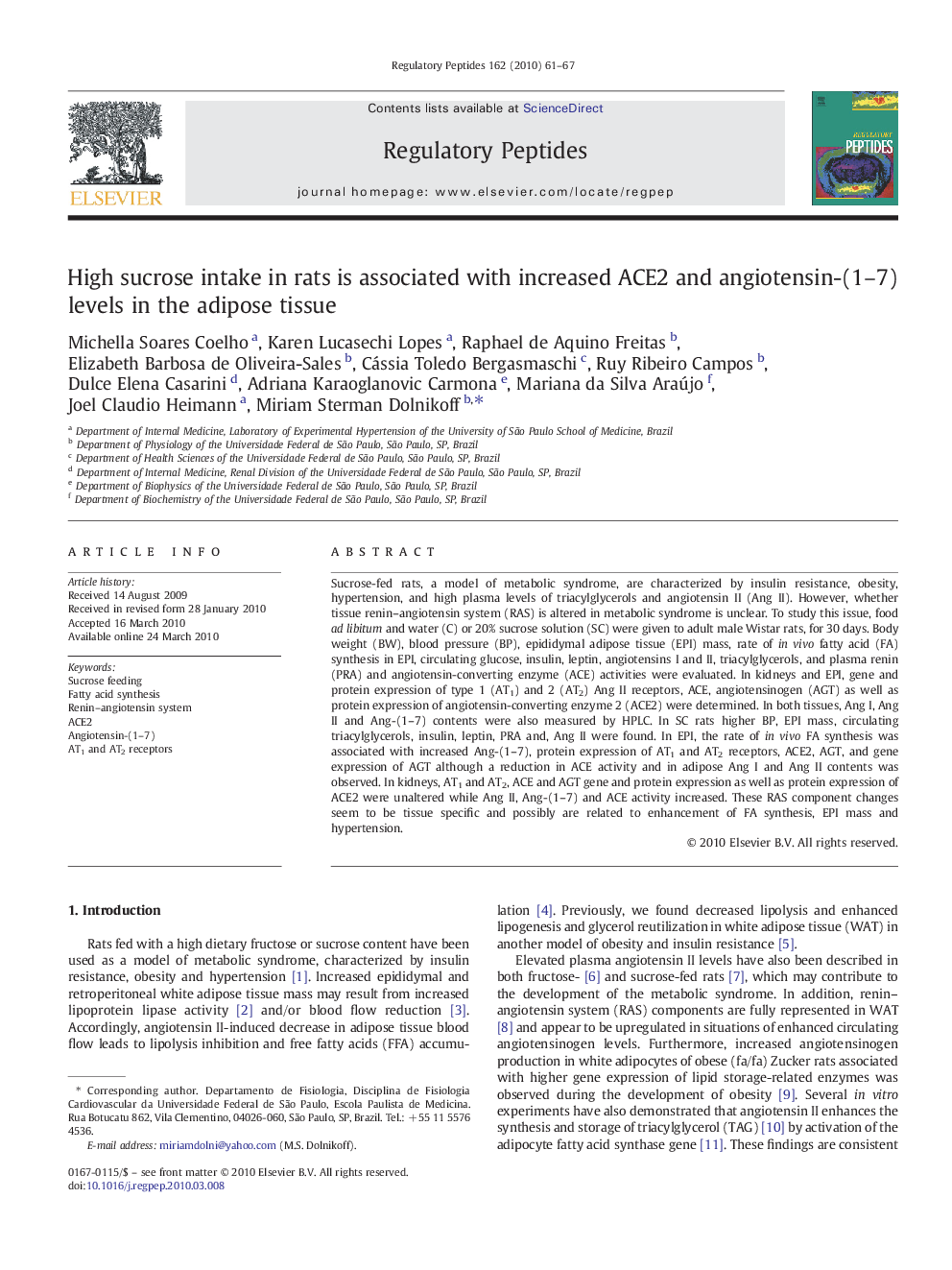| Article ID | Journal | Published Year | Pages | File Type |
|---|---|---|---|---|
| 2022856 | Regulatory Peptides | 2010 | 7 Pages |
Sucrose-fed rats, a model of metabolic syndrome, are characterized by insulin resistance, obesity, hypertension, and high plasma levels of triacylglycerols and angiotensin II (Ang II). However, whether tissue renin–angiotensin system (RAS) is altered in metabolic syndrome is unclear. To study this issue, food ad libitum and water (C) or 20% sucrose solution (SC) were given to adult male Wistar rats, for 30 days. Body weight (BW), blood pressure (BP), epididymal adipose tissue (EPI) mass, rate of in vivo fatty acid (FA) synthesis in EPI, circulating glucose, insulin, leptin, angiotensins I and II, triacylglycerols, and plasma renin (PRA) and angiotensin-converting enzyme (ACE) activities were evaluated. In kidneys and EPI, gene and protein expression of type 1 (AT1) and 2 (AT2) Ang II receptors, ACE, angiotensinogen (AGT) as well as protein expression of angiotensin-converting enzyme 2 (ACE2) were determined. In both tissues, Ang I, Ang II and Ang-(1–7) contents were also measured by HPLC. In SC rats higher BP, EPI mass, circulating triacylglycerols, insulin, leptin, PRA and, Ang II were found. In EPI, the rate of in vivo FA synthesis was associated with increased Ang-(1–7), protein expression of AT1 and AT2 receptors, ACE2, AGT, and gene expression of AGT although a reduction in ACE activity and in adipose Ang I and Ang II contents was observed. In kidneys, AT1 and AT2, ACE and AGT gene and protein expression as well as protein expression of ACE2 were unaltered while Ang II, Ang-(1–7) and ACE activity increased. These RAS component changes seem to be tissue specific and possibly are related to enhancement of FA synthesis, EPI mass and hypertension.
